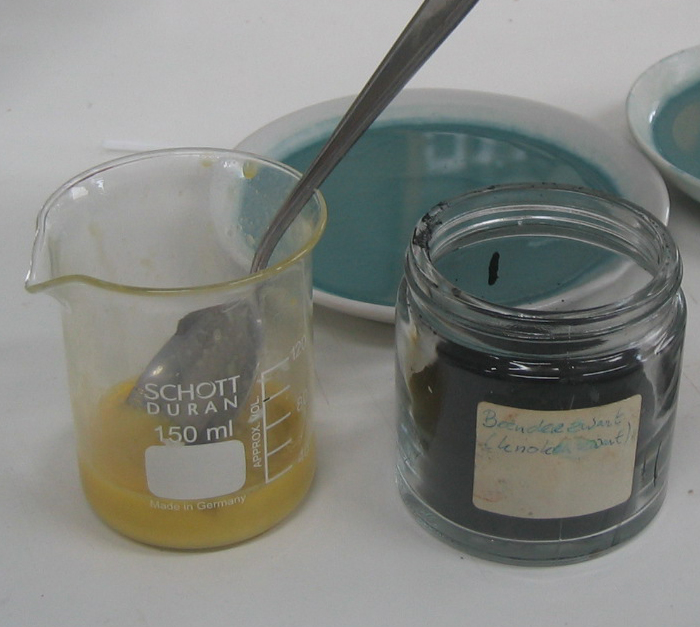Types of painting techniques where pigments are mixed with an organic binder. The meaning of the term “tempera” kept changing over time. It originates from the word temperare, meaning “to mix”, which used to denote a more or less liquid substance used to bind pigments. In the Middle Ages, the term narrowed to mean a binder used to impregnate dry pigments and fix them to the painting base. Later still, the meaning of the term was reduced to water-soluble substances such as eggs, animal glue, and gum arabic. In its narrowest sense, the term denotes a binder based on egg yolk. To this day, experts still disagree about the term’s implications. Thus, some experts consider the term “tempera” to mean any technique requiring the pigments to be mixed with an organic binder. Others distinguish between water-soluble and fatty binders and call the former tempera and the latter oil painting. Meanwhile, the third group of experts use the term “tempera” exclusively for the techniques that use emulsions as binders while separating the other organic binder techniques into animal glue and casein painting; oil, resin, and wax painting; and mixed or combined techniques.

Legal Terms of Use
© 2025 ZRC SAZU UIFS, Corpus picturarum muralium medii aevi
ZRC SAZU
France Stele Institute of Art History
Novi trg 2
1000 Ljubljana


Spodaj seznam podrobno opisuje piškotke, ki se uporabljajo na našem spletnem mestu.
| Cookie | Type | Duration | Description |
|---|---|---|---|
| _ga | Non-Necessary | 2 years | This cookie is installed by Google Analytics. The cookie is used to calculate visitor, session, camapign data and keep track of site usage for the site's analytics report. The cookies store information anonymously and assigns a randoly generated number to identify unique visitors. |
| _gat | Non-Necessary | 1 minute | Google uses this cookie to distinguish users. |
| _gid | Non-Necessary | 1 day | This cookie is installed by Google Analytics. The cookie is used to store information of how visitors use a website and helps in creating an analytics report of how the wbsite is doing. The data collected including the number visitors, the source where they have come from, and the pages viisted in an anonymous form. |
| cookielawinfo-checkbox-necessary | Necessary | 1 year | This cookie is set by GDPR Cookie Consent plugin. The cookies is used to store the user consent for the cookies in the category "Necessary". |
| cookielawinfo-checkbox-non-necessary | Necessary | 1 year | This cookie is set by GDPR Cookie Consent plugin. The cookies is used to store the user consent for the cookies in the category "Non Necessary". |
| CookieLawInfoConsent | Necessary | 1 year | The cookie is used to store the summary of the consent given for cookie usage. It does not store any personal data. |
| PHPSESSID | session | Time of session | Cookie stores information about the user's session and allow users to keep their entries during the time of visiting the website. |
| pll_language | Necessary | 1 year | This cookie is used to remember any selection a user has made about language. |
| show_preloader_once | Necessary | Session | With this cookie we remember the user's first visit. |
| viewed_cookie_policy | Necessary | 1 year | The cookie is used to store whether or not you have consented to the use of cookies. It does not store any personal data. |